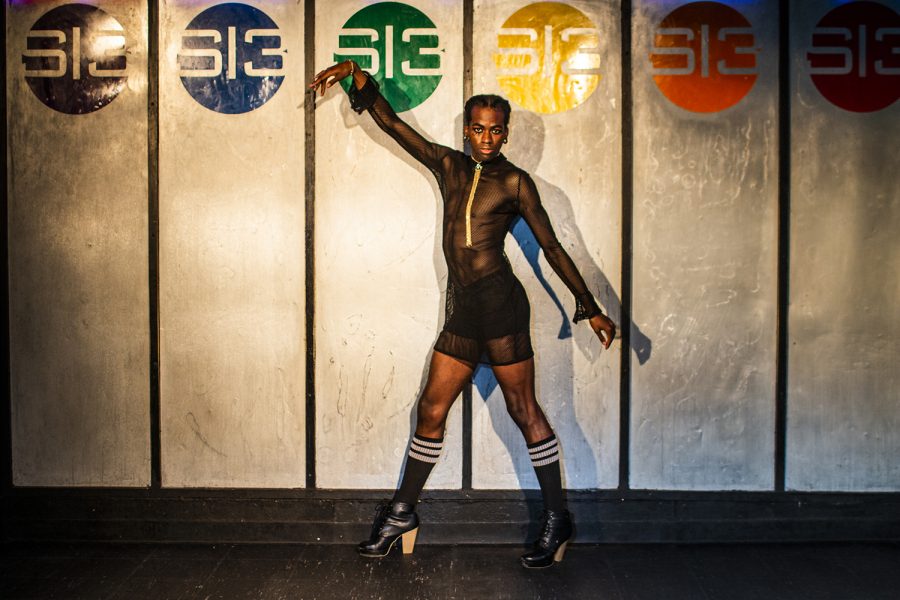Neal: Have we gentrified drag culture for LGBTQ+ and POC communities?
At what point do LGBTQ bars become so watered down that their true purpose becomes lost?
Haus of Eden performer Mx. Divine poses for a portrait at Studio 13 on Wednesday, August 29, 2018.
February 6, 2019
Dating back to the early 19th century, drag and blackface were used in minstrel shows and vaudeville to mock and oppress African American women. This blatant form of mockery was seen as entertainment. Fast forward to the 1980s — drag became a tool of reclamation for the black, Latinx, and LGBTQ+ communities and served as an important outlet for marginalized communities. Has anything but time really changed, though?
RELATED: Famous Poet and LGBTQ+ Activist Andrea Gibson to speak at Prairie Lights
For most people of color who were rejected by their families for identifying with the LGBTQ+ community, drag was a lifestyle. These communities developed their own lexicon, culture, and way of life; they formed “houses” that essentially became surrogate families that consisted of people they could relate to and form a bond with. These houses coexisted among one another for safety and became known as counterculture that was defined by people of color.
The University of Iowa is one of the most liberal campuses in the Midwest. Alongside being a mostly liberal campus, the famous fast-paced party scene of Iowa City becomes mostly visible on the weekends at several bars, including a gay and lesbian bar called Studio 13. This bar prides itself in being the “foundation for the Iowa City LGBTQIA+ community” and the only gay and lesbian bar in downtown Iowa City.
RELATED: A Gaythering: Safety and comfort in identity
Among the many events that take place at Studio 13, a notable one worth mentioning is the drag show, which takes place roughly twice a week. At these shows, people dress up in exaggerations of femininity or masculinity while performing, which may include lip syncing and dancing.
But are the events that take place in this predominantly white area commodifying drag culture, ball culture, and voguing? Is this another case of cultural appropriation? Not until recently has drag became more acceptable and gained mainstream attention, especially with the popularity of RuPaul’s “Drag Race,” which has aired for nearly a decade. Drag has brought individuals on the fringes of society closer together and helped form a safe community for a lot of people. Its history should never be forgotten.
Drag has brought individuals on the fringes of society closer together and helped form a safe community for a lot of people.
Taking that culture and replicating it in a white space for entertainment simply commodifies this practice, resulting in it becoming an empty practice that is only being taken for value at surface level. Labeling drag shows and ball culture in overwhelmingly white spaces as cultural appropriation may be a bit of a stretch, but whoever finds entertainment solely in these functions should take the time to understand the background and historical context.
RELATED: Kings of Drag: The secrets behind the fake beards
By whitewashing and gentrifying this culture, it flips the purpose of drag and ball culture back around to a practice that is detrimental to a marginalized group of people. Though an environment such as Studio 13 is an attempt at creating a safe space, those who are outside the persons of color and LGBTQ+ community must be aware of the history of drag and ball culture.
If individuals decide to partake in these practices, it is important for them to understand their role in these spaces. Yes, these safe spaces for individuals who once used them to seek refuge from discrimination have the possibility of regressing to the same “entertainment only” purpose they faced in the early 19th century. Acknowledging the history of drag and the brutal treatment that people of color and LGBTQ+ communities have faced ensures that we appreciate the art and support it as an outlet instead of pure entertainment.




















